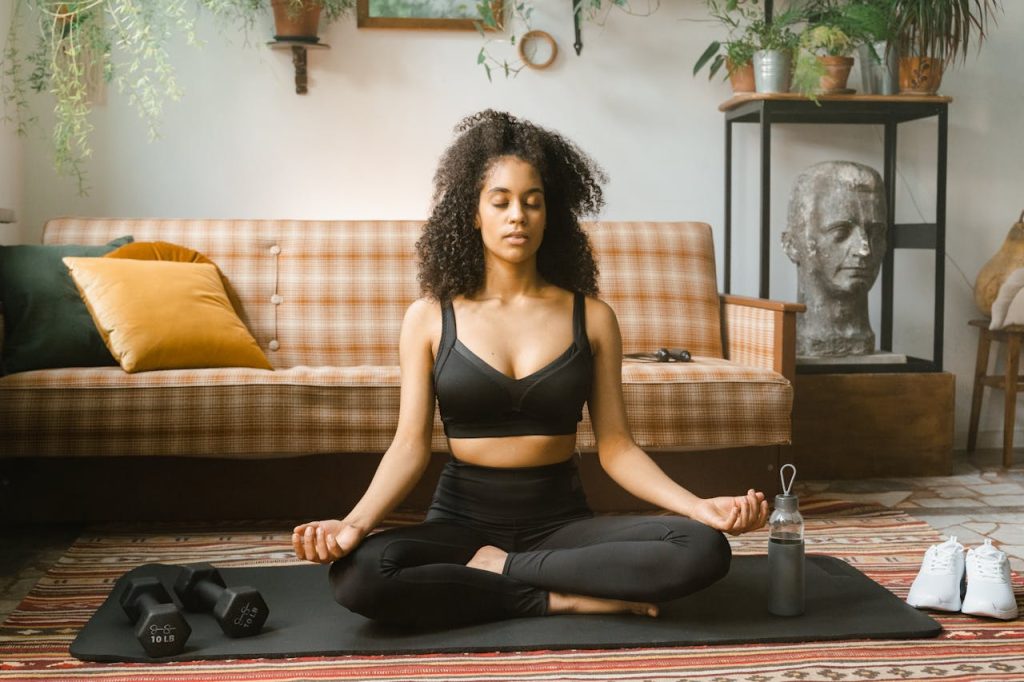Discover how to meditate with this step-by-step beginner’s guide. Learn techniques, benefits, and common mistakes to avoid. Start your meditation journey today.
Blog Overview: What Will You Learn?
In this guide, we answer the important question: how do you meditate? Whether you’re brand new to meditation or looking to deepen your practice, this blog post offers a practical, easy-to-follow roadmap. Readers will:
- Learn what meditation is and why it works
- Understand different types of meditation techniques
- Discover how to meditate step-by-step
- Explore benefits backed by science
- Avoid common meditation mistakes
- Get access to free meditation resources
How Do You Meditate? The Complete Guide for Beginners
In today’s fast-paced world, finding inner peace may feel out of reach. But with just a few minutes a day, meditation can help you slow down, breathe, and reconnect with yourself. If you’re asking, “how do you meditate?”, you’re not alone. At Mindfulness Meditation Hub, we help people of all backgrounds begin and sustain mindful practices that lead to a more peaceful life.
What Is Meditation?
Meditation is the practice of training your attention and awareness to achieve a mentally clear and emotionally calm state of mind. It’s rooted in ancient spiritual traditions but is now widely used as a secular tool for stress relief, self-awareness, and well-being.
At its core, meditation is simply the act of being present.
Why Should You Meditate?
If you’re wondering why people meditate, here are some of the proven benefits:
- Reduces stress and anxiety
- Improves focus and concentration
- Promotes emotional health
- Enhances self-awareness
- Supports better sleep
- Increases patience and tolerance
Scientific studies from institutions such as Harvard and Johns Hopkins support the mental and physical benefits of meditation, even when practiced for just a few minutes a day.

Types of Meditation: Choose What Works for You
As you learn how to meditate, it helps to explore different styles. Here are a few popular meditation types:
1. Mindfulness Meditation
- Focuses on being present and observing thoughts without judgment
- Common in Western practices and often recommended for beginners
2. Guided Meditation
- Involves a narrator or teacher guiding you through the session
- Ideal for those who need structure or are new to meditation
- (Try our free guided meditations at Mindfulness Meditation Hub)
3. Breath Awareness Meditation
- Involves focusing entirely on your breath
- Enhances concentration and helps calm the mind
4. Loving-Kindness Meditation (Metta)
- Encourages feelings of compassion toward self and others
- Great for improving emotional intelligence and reducing resentment
5. Body Scan Meditation
- Focuses on physical sensations in the body, from head to toe
- Helps with pain relief and promotes relaxation
How Do You Meditate? Step-by-Step Instructions
Let’s break down how to meditate in a simple, practical way:
Step 1: Find a Quiet Space
Choose a spot where you won’t be disturbed. It could be your bedroom, office, or a corner in your living room.
Step 2: Sit Comfortably
You don’t need to sit cross-legged unless you want to. Sit in a chair or on a cushion with your spine straight and shoulders relaxed.
Step 3: Set a Timer
Begin with 5–10 minutes. You can increase this over time.
Step 4: Close Your Eyes and Breathe
Take a few deep breaths. Then, settle into your natural breathing rhythm.
Step 5: Focus on Your Breath
Notice the sensation of air entering and leaving your nose or the rise and fall of your belly. When your mind wanders (and it will), gently bring your focus back to your breath.
Step 6: Don’t Judge Your Thoughts
The goal isn’t to “empty your mind.” It’s to notice your thoughts and return to your breath without criticism.
Step 7: End Gently
When the timer goes off, slowly open your eyes. Take a moment to notice how you feel before resuming your day.

How Often Should You Meditate?
Consistency is key. Even meditating for 5–10 minutes a day can create lasting benefits. As you become more comfortable, try increasing your meditation time to twice a day.
Common Mistakes to Avoid When Learning How to Meditate
Expecting Immediate Results
Meditation is not a quick fix—it’s a practice that builds over time.
Trying to Eliminate All Thoughts
Your mind will wander. That’s okay. Bring it back.
Forcing Relaxation
Don’t try to feel a certain way. Let the experience be what it is.
Skipping Too Often
Like physical exercise, regularity builds momentum. Stay consistent.
Tips to Enhance Your Meditation Practice
- Create a dedicated meditation space
- Use a journal to reflect on your experience
- Try meditating at the same time each day
- Experiment with background music or nature sounds
- Use apps or videos if you need guided support
How Do You Meditate With Us?
At Mindfulness Meditation Hub, we make it easy for you to get started. We offer:
- Free guided meditation videos
- Mindfulness tips and blogs
- Tools for kids, adults, and families
- Breathwork and body scan techniques
Whether you’re learning how to meditate for the first time or deepening your current practice, our resources are designed to support your journey.
Final Thoughts: You Don’t Have to Be a Monk to Meditate
If you’ve been asking yourself, ‘How do I meditate?’ know that there’s no perfect way. The most important part is to start. With consistency, kindness, and curiosity, you can build a meditation habit that transforms your mental clarity, emotional balance, and overall well-being.

